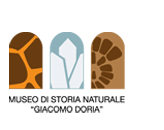The majority of Room 17 is dedicated to insects, with 12 stunning pieces of furniture with glass in the centre of the room built especially by the Alberto Issel firm in Genoa in 1915. The cases contain a significant representation of the vitally important and world-renowned entomological collections stored in the museum. The exhibition features the various orders into which Insects are divided, starting from those considered to be more primitive, such as the Ephemeroptera (mayflies), the Odonata (dragonflies) and the Blattodea (cockroaches), and moving on to focus on the more evolved orders, including the Diptera (mosquitos, flies), the Coleoptera (carabidae, ladybirds, beetles) and the Hymenoptera (wasps, bees, ants). The specimens are often accompanied by photos and drawings. For each group, both local and exotic species are shown, with the latter wielding the greater aesthetic impact on account of their size, shape and colour. The Phasmatodea (stick insects, leaf insects) and the Lepidoptera (butterflies) are good examples of this.
Finally, a large display case features samples of Hymenoptera nests, while a smaller case contains several Ligurian species included in the “Rete Natura 2000” [Nature Network 2000], which is made up of Sites of Community Importance (SCIs) as set out by the European Commission Habitats Directive for the protection of biodiversity.




